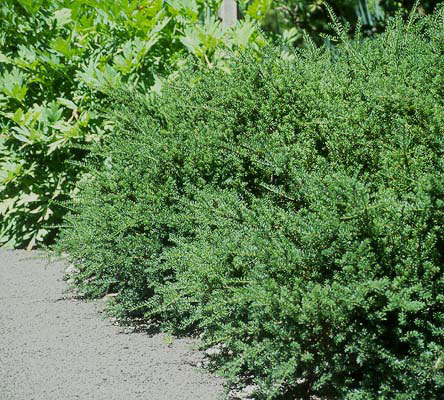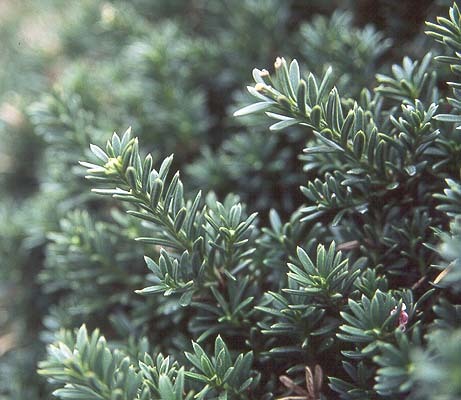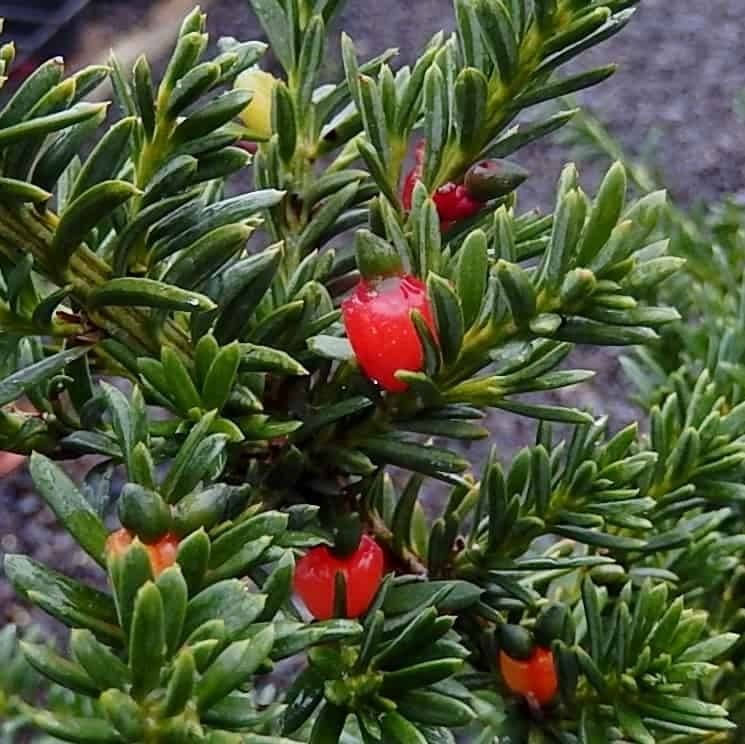Podocarpus totara, as described in 1843 by William Jackson Hooker (1785-1865), in Icones Plantarum, vol 2, is commonly known as alpine or snow totara. According to H.H. Allen, the type specimen was found on New Zealand's Mount Tongariro
Description. Alpine totara is a prostrate to semi-prostrate evergreen, coniferous shrub with wide-spreading branches, sometimes almost forming a miniature tree.
In its native habitat, there really are no remotely similar species; it is instantly recognizable.
Distribution. This species is native to New Zealand's north and south islands, and can be found growing in upper forest margins and subalpine scrub terrain from latitude 36°50' southwards, also found in lowland forest in Westland on the South Island.
Based on data from 416 collection localities, alpine totara grows at elevations of 3,500 feet (1100 m) above sea level (±1,000 feet / 290 m). Within this range, mean annual temperature is 44°F ( 6.9°C), with an average minimum in the coldest month of 27°F (-2.6°C), making its cold-hardiness the lowest recorded for a species of Podocarpaceae. In its native climate this conifer also experiences a mean annual precipitation of 103 inches (2620 mm).
It is very common in the high country of Tongariro National Park, and can be seen in that area along most walks that pass through alpine shrub communities, where it is often a dominant species. These alpine shrublands are very well displayed around Ketetahi Hut on the Tongariro Crossing, at high elevations on Hauhungatahi, and on walks around Whakapapa on Ruapehu, such as the Taranaki Falls and Silica Rapids tracks.
Hardy to USDA Zone 7, cold hardiness limit between 15°F and 10°F (-17.7°C and -12.2°C).


